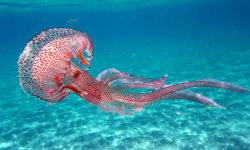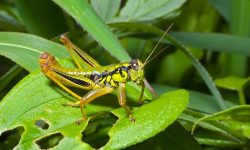Sharks are the ocean’s ultimate predators — sleek, powerful, and perfectly adapted to their environment. Found in nearly every sea around the world, these ancient hunters play a vital role in maintaining the balance of marine ecosystems. But what do sharks actually eat?
Contrary to popular belief, not all sharks crave blood or attack large animals. Their diets are as diverse as their species. Some prefer fish or crustaceans, while others consume plankton or even seabirds. The type of food a shark eats depends largely on its size, habitat, and hunting technique.
In this guide, we’ll dive deep into 20 foods sharks love the most — exploring how and why they eat them, and how these choices make each species a unique predator of the deep.
Understanding the Shark Diet

Sharks are among the most successful predators on the planet, having existed for more than 400 million years. Their ability to adapt to nearly every ocean environment comes largely from their diverse and efficient feeding behavior. Despite their fierce reputation, not all sharks are dangerous killers — their diets vary widely depending on species, habitat, and hunting style.
Sharks Are Carnivores — But Not All Are the Same
Most sharks are carnivorous, meaning they feed on other animals for survival. However, their prey can range from microscopic plankton to large marine mammals. For example, a whale shark — the largest fish in the world — eats plankton and tiny crustaceans by filtering seawater, while a great white shark hunts seals and tuna with powerful precision. This diversity makes sharks a vital part of the ocean food web.
How Sharks Hunt
Sharks rely on a combination of senses that make them near-perfect hunters. Their sense of smell can detect a single drop of blood in millions of gallons of water. They also use electroreception, special organs called the ampullae of Lorenzini, to sense the weak electrical signals of living prey.
Most sharks are ambush or pursuit predators. Some, like tiger sharks, patrol coastal shallows to surprise unsuspecting animals, while others, like makos, rely on speed to chase fast fish. Their teeth are perfectly adapted to their prey — serrated for cutting meat, needle-like for gripping fish, or flat for crushing shells.
When and How Often Sharks Eat
Sharks don’t eat constantly. Instead, they feed strategically, depending on availability and the size of their prey. Large sharks such as great whites may go days or even weeks between meals because their high-fat diet provides long-lasting energy. Smaller reef sharks and bottom-feeders eat more frequently, consuming small fish and crustaceans several times a week.
Most shark species are nocturnal feeders, hunting at dusk or during the night when visibility is low. However, others feed opportunistically at any time, depending on conditions and prey movement.
Why Sharks Are Essential to Ocean Health
By feeding on weak, sick, or dying animals, sharks keep marine populations healthy and balanced. They also prevent certain species from overpopulating, which maintains biodiversity in coral reefs, coastal zones, and open seas. Without sharks, ocean ecosystems would quickly become unstable.
Their diet tells a deeper story — sharks are not just predators; they are nature’s regulators, ensuring that every part of the ocean remains alive and thriving.
20 Foods They Love the Most
1. Fish
Fish are the most common food source for sharks of all sizes. From small reef sharks to massive great whites, fish provide essential protein and fat for energy and muscle strength.
Sharks use keen senses of smell and electroreception to locate schools of fish from miles away. Species like the blacktip and blue shark rely heavily on fish such as mackerel, sardines, and tuna.
Their streamlined bodies and sharp teeth allow them to chase and catch swift prey with ease, maintaining a natural balance in fish populations.
2. Squid
Squid are a favorite meal for many mid-sized shark species, including mako and thresher sharks. Squid are fast and elusive, offering both a challenge and a nutritious reward.
Sharks hunt squid in open water, often at night when these cephalopods rise closer to the surface. Their tentacles provide rich protein and minerals essential for shark growth.
The battle between squid and shark is an ancient ocean rivalry — a true test of speed, strategy, and stealth.
3. Crustaceans
Smaller shark species, such as nurse sharks and bonnetheads, enjoy feeding on crustaceans like crabs, lobsters, and shrimp.
They use their strong jaws to crush hard shells and extract the soft meat inside. Crustaceans are rich in calcium and nutrients that support healthy cartilage and teeth.
Bottom-dwelling sharks often use suction feeding to pull crabs out of the sand, showcasing how versatile their hunting methods can be.
4. Rays and Skates
Larger sharks, such as tiger and hammerhead sharks, often prey on rays and skates. These flat-bodied fish are difficult to catch, requiring patience and precision.
Hammerheads are especially skilled at pinning rays to the seabed with their wide, flat heads before taking a bite. The soft, fleshy texture of rays provides dense protein and fat.
By hunting rays, these sharks help regulate populations of bottom-feeding fish, maintaining ecosystem health.
5. Marine Mammals
Some of the most powerful sharks, like great whites and tiger sharks, feed on marine mammals such as seals, sea lions, and dolphins.
Their massive jaws and serrated teeth are designed to tear through thick blubber — a high-energy food source ideal for sustaining large predators.
While these attacks may seem brutal, they are essential for ocean balance, removing weak or sick individuals from mammal populations.
6. Sea Turtles
Sea turtles are another favorite target for larger sharks. Species like tiger sharks are known for their ability to crush turtle shells with their powerful jaws.
The meat and fat of turtles provide long-lasting energy, helping sharks sustain themselves during long migrations.
These interactions are part of the natural food web, where both predator and prey have evolved unique defenses and strategies over millions of years.
7. Seabirds
Some shark species, particularly tiger and bull sharks, feed on seabirds that dive too close to the water’s surface.
They often snatch injured or resting birds floating on the ocean, using surprise attacks from below. Seabirds offer a mix of protein and fat, supplementing a shark’s diet.
This opportunistic feeding behavior highlights how adaptable sharks are — capable of eating nearly anything that enters their domain.
8. Octopus
Octopuses are a highly nutritious meal for many coastal sharks. Their soft bodies are easy to consume and packed with protein.
Sharks such as reef and lemon sharks commonly hunt octopuses hiding among coral or rocky crevices. They use suction and biting techniques to extract them.
Octopuses’ natural camouflage makes them a challenging catch, but the reward is worth the effort.
9. Small Sharks
Larger sharks often prey on smaller ones — a phenomenon known as intraspecific predation.
For example, tiger sharks and bull sharks are notorious for eating juveniles of their own species or others. Shark meat provides a dense, protein-rich meal.
This cannibalistic tendency helps control shark populations naturally and ensures survival of the fittest in the open ocean.
10. Plankton
Not all sharks are fierce carnivores — some are gentle giants that filter-feed on plankton. Whale sharks, basking sharks, and megamouth sharks use specialized gills to trap microscopic organisms.
Plankton, though tiny, provides essential nutrients and energy when consumed in massive quantities. These filter-feeding sharks swim with mouths wide open, processing thousands of gallons of water per hour.
Their peaceful feeding habits show the incredible diversity within the shark family.
11. Mollusks
Mollusks such as clams, snails, and scallops are common in the diets of bottom-feeding sharks like the nurse and wobbegong.
They dig into sand or mud to locate these shelled animals, then crush them using flat, plate-like teeth designed for grinding.
Mollusks are rich in calcium and minerals, helping maintain strong skeletal structures in sharks.
12. Eels
Eels are a preferred meal for several shark species that hunt in reef environments. Their slippery bodies make them difficult to catch but rewarding to eat.
Sharks like sand tiger and reef sharks use their agility to navigate narrow spaces and capture hiding eels.
Eels are packed with oils and proteins, making them an excellent energy source for active predators.
13. Jellyfish
While it might seem odd, some sharks — particularly juveniles — have been observed eating jellyfish.
Jellyfish offer hydration and trace nutrients, though they are not a major part of most shark diets. The soft texture makes them easy to swallow, especially for younger sharks.
This behavior often occurs in plankton-rich waters where jellyfish blooms are abundant.
14. Sea Snakes
In tropical regions, certain sharks such as tiger and reef sharks prey on sea snakes.
These reptiles provide dense fat and nutrients, especially during mating or migration periods when they gather near reefs.
Sharks attack sea snakes from below, biting quickly before the snake can escape or coil defensively.
15. Carrion (Dead Animals)
Sharks are opportunistic feeders and will eat carrion — dead fish, whales, or marine animals — when available.
The scent of decay travels far underwater, attracting scavenging species like tiger and great white sharks.
Consuming carrion helps clean the ocean by recycling nutrients and preventing the spread of disease.
16. Crabs
Crabs are a staple for smaller and benthic (bottom-dwelling) sharks like leopard and bamboo sharks.
They use suction feeding to pull crabs from sand, then crush the shells with specialized teeth.
Crabs are full of calcium and chitin, which promote strong cartilage growth and energy in sharks.
17. Squat Lobsters and Shrimp
Sharks that live in deep waters or near coral reefs often eat squat lobsters and shrimp.
These small crustaceans hide in crevices but emit chemical signals that sharks can detect using electroreceptors.
Though small, they offer high-value protein and are often consumed in large numbers.
18. Penguins
In colder regions, sharks like the great white and mako occasionally feed on penguins that enter the water to hunt fish.
They ambush from below, using speed and precision to grab the bird before it can react. Penguins provide rich fat content, vital for energy in cold waters.
This rare but natural interaction is part of the predator-prey balance in sub-Antarctic ecosystems.
19. Dolphins (Rarely)
While rare, some large sharks — mainly tiger and great white sharks — have been known to prey on small or injured dolphins.
These events typically occur when dolphins are isolated from their pods. The high fat content of dolphin blubber provides energy-dense nutrition.
However, dolphins are fast and intelligent, so these encounters often end with the dolphin escaping unharmed.
20. Sea Cucumbers and Starfish
Some benthic sharks, like the horn and Port Jackson sharks, feed on slow-moving sea cucumbers and starfish.
They use their suction ability to pull these creatures off rocks or the seafloor, then crush them with powerful jaws.
While not high in fat, these invertebrates offer vital minerals and keep the seafloor clean by recycling nutrients.
Why Sharks Eat What They Eat
Diet Depends on Size and Habitat
Small sharks like catsharks feed mostly on crustaceans and small fish, while massive species like great whites and tiger sharks target larger prey such as mammals or turtles.
Habitat also plays a key role — reef sharks consume reef-dwelling creatures, while pelagic (open-ocean) species hunt fast-swimming fish and squid.
Adaptations for Different Diets
Each shark species has evolved specialized teeth for its preferred food:
-
Sharp, serrated teeth for cutting flesh.
-
Flat, molar-like teeth for crushing shells.
-
Needle-like teeth for gripping slippery prey.
These adaptations make sharks one of the most versatile hunters on Earth.
Their Role in the Ecosystem
By eating weak or sick animals, sharks help maintain healthy marine populations. They prevent overpopulation of certain species and contribute to ocean biodiversity.
Without sharks, ecosystems would become unbalanced — leading to overgrazing, disease spread, and declining fish stocks.
Frequently Asked Questions (FAQs)
Do all sharks eat meat?
Yes. Almost all sharks are carnivorous, though a few species like the bonnethead shark eat seagrass as part of an omnivorous diet.
Do sharks eat humans?
No. Sharks do not hunt humans. Most shark bites are cases of mistaken identity during feeding or curiosity.
What do baby sharks eat?
Baby sharks, called pups, feed on small fish, shrimp, and plankton until they grow large enough to hunt bigger prey.
How often do sharks eat?
It varies. Some sharks eat every few days, while large ones like great whites may go weeks between meals due to slow digestion.
Can sharks eat plastic or trash?
Unfortunately, yes — by accident. Floating waste can be mistaken for prey, causing health problems for sharks.
Conclusion
Sharks are extraordinary hunters with diets as diverse as the oceans they inhabit. From tiny plankton and crustaceans to seals, turtles, and fish, each species has evolved to thrive on what’s available in its environment.
Their feeding habits keep marine ecosystems in balance, ensuring the health of coral reefs, fish populations, and ocean biodiversity.
So, the next time you think of sharks as mindless predators, remember — their diet is a masterpiece of evolution, perfectly tuned to the rhythm of the sea.






